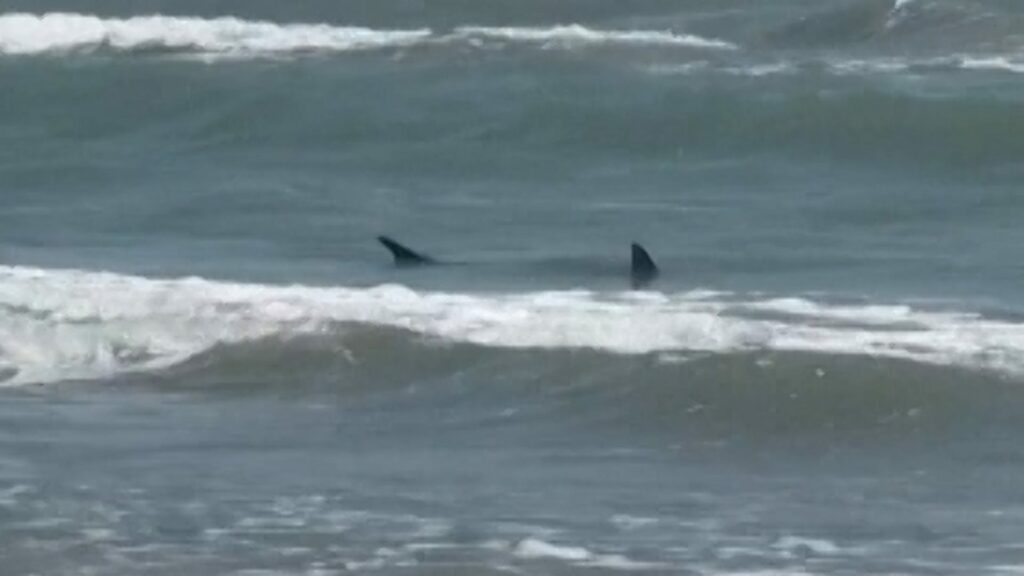So far in 2024, sharks aren’t biting people more than normal, marine experts said.

Sharks attack at South Padre Island, Texas beach leaves two injured
Authorities responded after receiving reports of a shark in the water off the coast of Texas that bit two people.
After the recent spate of severe shark bites in U.S. waters, marine experts want beach-goers to know sharks aren’t out to get them, and attacks aren’t happening more than usual.
But shark bites are more common during the summer, experts told USA TODAY, because with more people in the water, a shark is more likely to encounter a human. And bites can be gruesome.
In Florida, two people had to have limbs amputated following attacks in June, and last weekend, two people were bitten in two days along the state’s East Coast in an area known as the “Shark Bite Capital of the World.” Last week, off South Padre Island in Texas, two people were bitten by sharks. And on June 24, Hawaiian actor Tamayo Perry died after being bitten multiple times by a shark.
Still, such attacks are incredibly rare, and 2024 hasn’t seen a spike in bites, said Stephen Kajiura, a shark expert and biology professor at Florida Atlantic University.
“There’s no giant shark conspiracy where they’re suddenly turning on us,” Kajiura told USA TODAY. “It is a statistics answer, a numbers game. The more people you’ve got in the water, the more chances that someone’s going to run into a shark.”
Are more shark bites happening?
No.
Gavin Naylor, who runs the International Shark Attack File at the Florida Museum of Natural History told USA TODAY that 2024 is on track to be a “very typical, average year, no different from any other year,” when it comes to shark bites. Shark bites had actually been “slow” this year, until the summer, he said.
The shark bites that happened off Florida and Texas in recent weeks likely happened because so many more people go swimming at the beach during the summer months, especially around holidays, Kajiura said.
“Part of the problem is when you have a small number of bites in close proximity, people tend to ramp that up and assume there’s something bigger going on,” Kajiura said.
If you are injured or bitten by a shark in the water, the best thing you can do is fight back, Kajiura said, by punching the shark in the eye or gills, which should quickly encourage it to swim away from you.
Most attacks happen in Florida, Kajiura said, in large part because the state is surrounded by water and many Floridians live along the coast. Last week, two bites occurred at Florida’s New Smyrna Beach, which consistently logs the most shark bites anywhere in the world, according to Naylor, usually about 12 to 15.
In 2023, there were 120 confirmed shark attacks worldwide, according to Naylor’s tracker. Among them, 69 were unprovoked bites and 22 were provoked bites. The remaining bites were boat bites and unconfirmed cases. The 2023 number was six higher than the five-year average.
Official data for 2024 will be released by the International Shark Attack File in January 2025.
What attracted sharks in Florida, Texas attacks?
Sharks that swim near shore eat bait fish with shiny scales that reflect sunshine through the water. In recent attacks, there probably were bait fish that attracted multiple sharks to an area where humans were, leading to bites, Naylor said.
When people are in the water, a hand or foot darting in the sun can be mistaken for a bait fish. Shiny watches and jewelry also can catch a shark’s eye, Kajiura said. Avoiding swimming near fishermen and taking note of large schools of fish can prevent an unwanted encounter with a hungry shark, he added.
Storms, like this month’s Hurricane Beryl, can also pull tasty food, like small dead animals into the water and attract sharks. But, studies have also found hurricanes and the low pressure systems that accompany them often cause sharks to swim out further into deeper waters, to avoid the storm’s impacts, both Kajiura and Naylor said.
Big storms also can change the surface of the sea, creating new sandbars where they were none, stranding a shark on the side closest to shore when the tide goes out.
Bigger sharks cause more damage
It’s unclear what shark species attacked Tamayo off Hawaii, but this summer’s other major shark bites off South Padre Island in Texas and Florida’s Panhandle are believed to be from large bull sharks or even bigger tiger sharks, Kajiura said.
The larger species have bigger, serrated teeth and larger jaws, which means they’re more likely to tear off a big piece of flesh, he said.
In Florida’s Walton County, one woman had her lower arm amputated and a teenager lost a hand and had to have a leg amputated. The attacks were four miles apart, making it “highly unlikely” it was the same shark in both cases, Naylor said.
“It’s far more likely that the conditions that brought one shark close into shore were the same conditions that brought another shark close into shore, and there were a lot of people in the area on the same day, and the two independent events happened in close succession,” Naylor said.
Most shark bites, however, are from smaller sharks, like blacktips, which usually just “nip” humans and don’t cause severe injuries, Naylor added.
“It’s always a tragedy when people are bitten, because they were there to enjoy themselves at the beach,” Kajiura said.
Contributing: Taylor Wilson, Dinah Voyles Pulver, USA TODAY
Source link : https://www.usatoday.com/story/news/nation/2024/07/08/florida-texas-shark-attack/74325235007/
Author :
Publish date : 2024-07-08 19:27:26
Copyright for syndicated content belongs to the linked Source.
